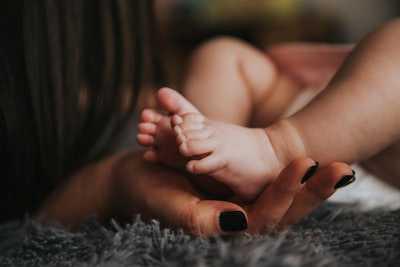Explore the World's Best Ideas
Join today and uncover 100+ curated journeys from 50+ topics. Unlock access to our mobile app with extensive features.
How Attachment Styles Affect Adult Relationships
Whatever your specific relationship problems, it’s important to know that your brain remains capable of change throughout life.
By identifying your attachment style, you can learn to challenge your insecurities, develop a more securely attached way of relating to others, and build stronger, healthier, and more fulfilling relationships.
295
2.37K reads
What Attachment Is
Attachment is the emotional connection you formed as an infant with your primary caregiver—probably your mother.
According to attachment theory, pioneered by British psychiatrist John Bowlby and American psychologist Mary Ainsworth, the quality of the bonding you experienced during this first relationship often determines how well you relate to other people and respond to intimacy throughout life.
306
1.43K reads
Attachment Styles and How They Shape Adult Relationships
The infant brain is so profoundly influenced by the attachment bond. Understanding your attachment style can offer vital clues as to why you may be having problems in your adult relationships. There arefour main attachment styles:
- Secure attachment
- Ambivalent (or anxious-preoccupied) attachment
- Avoidant-dismissive attachment
- Disorganized attachment.
296
1.5K reads
The Secure Attachment Style
It’s likely your primary caretaker was able to stay engaged with you as an infant and effectively manage their own stress as well as calm and soothe you when you were distressed. Having a secure attachment style might look like this:
- You’re able to be yourself in an intimate relationship.
- You’re comfortable expressing your feelings and needs.
- You’re able to maintain your emotional balance and seek healthy ways to manage conflict.
- When faced with setbacks you’re resilient enough to bounce back.
310
1.28K reads
Ambivalent or Anxious Attachment Style
It’s likely your parent or primary caregiver was inconsistent in their parenting style, sometimes engaged and responsive to your needs as an infant, other times unavailable or distracted.
People with an ambivalent attachment style tend to be overly needy:
- You may find it difficult to observe boundaries.
- You struggle to feel that you can trust or fully rely on your partner
- You may use manipulative tactics to keep your partner close.
- You need constant reassurance from your partner.
311
1.31K reads
Avoidant Attachment Style
An avoidant attachment style often stems from a parent who was unavailable or rejecting during your infancy. Since your needs were never regularly or predictably met by your caregiver, you were forced to self-soothe.
As someone with an avoidant-dismissive attachment style:
- You don’t feel you need others.
- The more someone tries to get close to you, the more you tend to withdraw.
- You’re uncomfortable with your emotions.
- You’re prone to minimize or disregard your partner’s feelings.
310
1.29K reads
Disorganized Attachment Style
Your parental figure may have ignored or overlooked your needs as an infant, or their erratic, chaotic behavior could have been frightening or traumatizing to you.
If you have a disorganized attachment style, you’ve likely never learned to self-soothe your emotions:
- You swing between emotional extremes of love and hate for a partner.
- You may exhibit antisocial behavior patterns, abuse alcohol or drugs, or prone to aggression or violence.
- You feel unworthy of love and terrified of getting hurt.
321
1.15K reads
Getting Help for Insecure Attachment
If you recognize an insecure attachment style in either yourself or your romantic partner, here's what you can do:
- A therapist can help you make sense of your past emotional experience and become more secure.
- Improve your nonverbal communication skills
- Boost your emotional intelligence. Understanding and managing your own emotions in positive ways can help strengthen a romantic relationship.
- A supportive relationship can play an important part in building your sense of security
284
1.19K reads
IDEAS CURATED BY
Claudia Florescu's ideas are part of this journey:
Learn more about loveandrelationships with this collection
How to create a positive work environment
Conflict resolution strategies
Effective communication in the workplace
Related collections
Similar ideas
10 ideas
The 4 Attachment Style (With tips on how to overcome the unhealthy)
mindbodygreen.com
7 ideas
1 idea
Attachment Theory: Overview and Implications - The Human Condition
thehumancondition.com
Read & Learn
20x Faster
without
deepstash
with
deepstash
with
deepstash
Personalized microlearning
—
100+ Learning Journeys
—
Access to 200,000+ ideas
—
Access to the mobile app
—
Unlimited idea saving
—
—
Unlimited history
—
—
Unlimited listening to ideas
—
—
Downloading & offline access
—
—
Supercharge your mind with one idea per day
Enter your email and spend 1 minute every day to learn something new.
I agree to receive email updates








